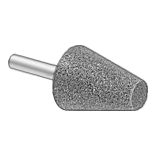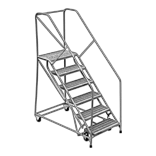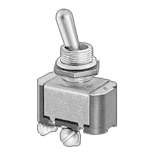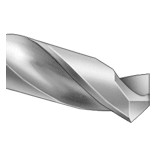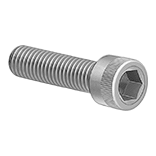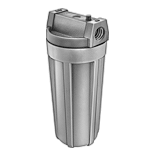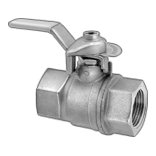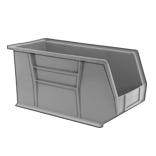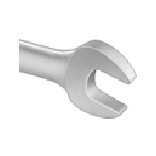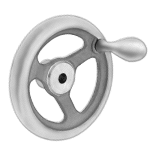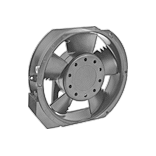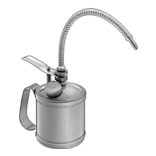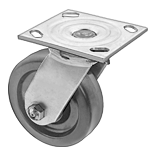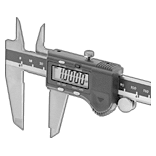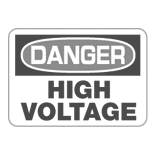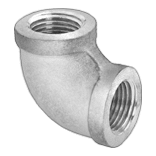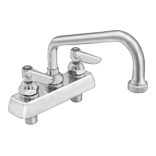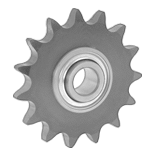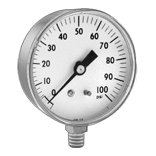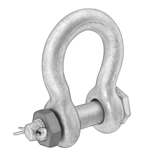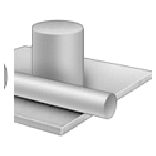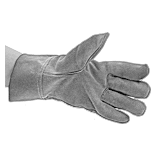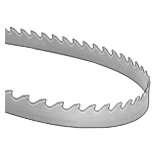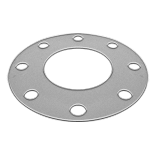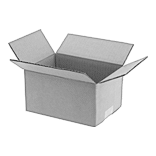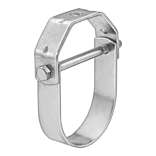High-Temperature 3D Printer Resins

Parts made from these resins remain strong and rigid in temperatures that would soften most plastic, so they're often used near ovens, engines, and other hot machinery. They're a good lightweight alternative to machined metal parts. Print them on a digital light processing (DLP), stereolithography (SLA), or LCD 3D printer.
Formlabs resins come in a cartridge compatible with Formlabs printers—just pop them in. To use them with other printers, they have a removable cap to pour out the contents of the cartridge.
Maximum exposure temperature is the point at which a printed part will begin to deform. Above this temperature, your part will start to lose structural integrity.
| Tensile Strength | Color | Flexural Modulus | Impact Strength | Hardness | Max. Exposure Temp. | Weight, g | Each | |
Formlabs Resins—Cartridge | ||||||||
|---|---|---|---|---|---|---|---|---|
| 7,060 psi (Good) | Clear | 400,000 psi (Semi-Rigid) | 0.32 ft.-lbs./in. (Poor) | Not Rated | 235° C 455° F | 1,000 | 0000000 | 0000000 |
High-Strength 3D Printer Resins

Used to print tooling, fixturing, and brackets, these resins create high-performance parts that are strong, stable, and rigid. Print them on a digital light processing (DLP), stereolithography (SLA), or LCD 3D printer.
Formlabs resins come in a cartridge compatible with Formlabs printers—just pop them in. To use them with other printers, they have a removable cap to pour out the contents of the cartridge.
Maximum exposure temperature is the point at which a printed part will begin to deform. Above this temperature, your part will start to lose structural integrity.
| Tensile Strength | Color | Flexural Modulus | Impact Strength | Hardness | Max. Exposure Temp. | Weight, g | Each | |
Formlabs Resins—Cartridge | ||||||||
|---|---|---|---|---|---|---|---|---|
| 9,460 psi (Excellent) | White | 1,360,000 psi (Rigid) | 0.30 ft.-lbs./in. (Poor) | Durometer 89D (Hard) | 160° C 325° F | 1,000 | 00000000 | 0000000 |
| 10,000 psi (Excellent) | White | 493,000 psi (Rigid) | 0.43 ft.-lbs./in. (Good) | Durometer 89D (Hard) | 75° C 170° F | 1,000 | 00000000 | 000000 |
Flexible 3D Printer Resins

Stretchy, soft, and sturdy, these resins make durable parts that resist breaking from repeated use. They’re often used to create long-lasting parts, such as seals, sleeves, and gaskets. These resins are also good for making springs, snap-fit parts, and other components that handle high impact. Print them on a digital light processing (DLP), stereolithography (SLA), or LCD 3D printer.
Formlabs resins come in a cartridge compatible with Formlabs printers—just pop them in. To use them with other printers, they have a removable cap to pour out the contents of the cartridge.
Flame-Retardant 3D Printer Resins

Create holders, guards, housings, and other parts to protect flammable components. These resins are self-extinguishing and meet UL 94 V-0 for flame resistance. If they do begin to smoke, they won't release toxins into the air because they're halogen free. They also meet ASTM E595, a standard used by NASA, which means they give off almost no volatile emissions that could damage electronics, even in a vacuum.
Print them on a digital light processing (DLP), stereolithography (SLA), or LCD 3D printer. They come in a cartridge compatible with Formlabs printers—just pop them in. To use them with other printers, they have a removable cap to pour out the contents of the cartridge.
Maximum exposure temperature is the point at which a printed part will begin to deform. Above this temperature, your part will start to lose structural integrity.
| Tensile Strength | Color | Flexural Modulus | Impact Strength | Hardness | Max. Exposure Temp. | Weight, g | Each | |
Formlabs | ||||||||
|---|---|---|---|---|---|---|---|---|
| 5,590 psi (Good) | Gray | 390,000 psi (Rigid) | 0.41 ft.-lbs./in. (Poor) | Durometer 80D (Medium) | 90° C 201° F | 1,000 | 0000000 | 0000000 |
Static-Dissipative 3D Printer Resins

Create printed parts that protect electronics from electrostatic discharge (ESD) buildup. These resins are also impact resistant. They’re good for final products, electronics housings, and jigs and fixtures in electronics manufacturing. Print them on a digital light processing (DLP), stereolithography (SLA), or LCD 3D printer. They come in a cartridge compatible with Formlabs printers—just pop them in. To use them with other printers, they have a removable cap to pour out the contents of the cartridge.
Maximum exposure temperature is the point at which a printed part will begin to deform. Above this temperature, your part will start to lose structural integrity.
| Tensile Strength | Color | Flexural Modulus | Impact Strength | Hardness | Max. Exposure Temp. | Surface Resistivity, ohms/sq. | Weight, g | Each | |
Formlabs | |||||||||
|---|---|---|---|---|---|---|---|---|---|
| 6,410 psi (Good) | Black | 260,000 psi (Semi-Rigid) | 0.48 ft.-lbs./in. (Good) | Durometer 90D (Hard) | 60° C 143° F | 105-108 | 1,000 | 0000000 | 0000000 |
